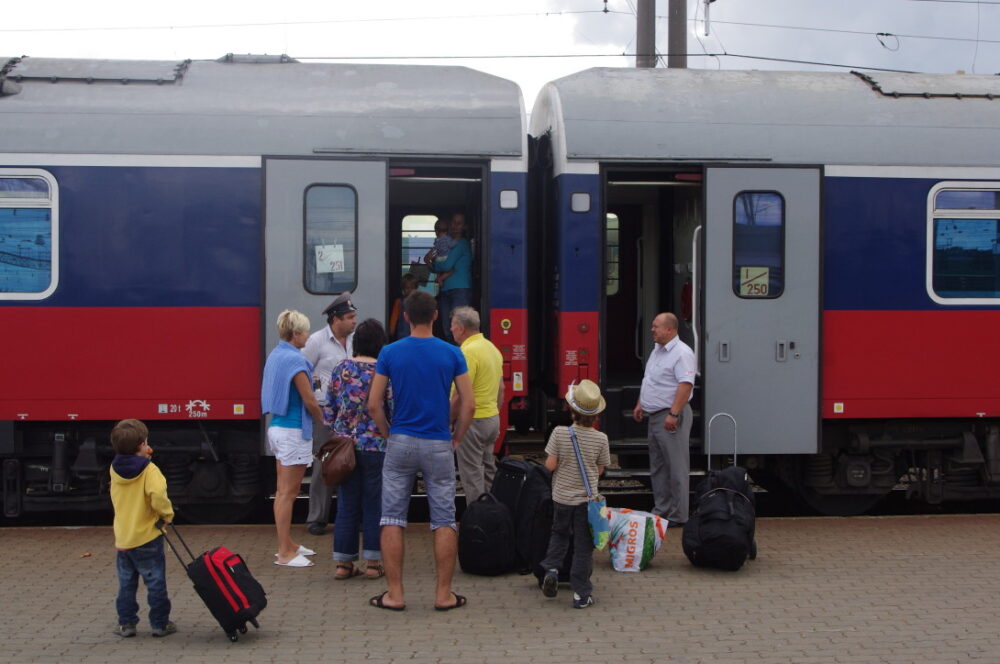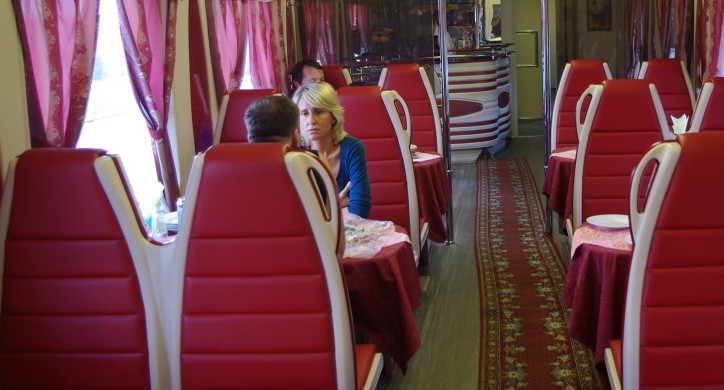An Old Tsar’s Tale Is Debunked.
Many rail fans know that the gauge of the track changes at the Russian border. It widens from the international standard of 4 feet 8 1/2 inches to about 5 feet.
I had been told that the reason for the difference was to delay any invading army at the Russian border because, presumably, it would take an invading army some time to convert their rail equipment.
On my trip to Russia, getting there from Berlin was quite a relaxed experience. Nevertheless, I was eager to learn how the difference in track width would be handled when our train reached the Russian border.

In the photo above, passengers are looking for the right rail car to find their accommodations.

The dining car was my introduction to the Russian habit of effectively blocking an view of the passing scenery by hanging multiple sets of draperies on the windows. The kitchen is a small area in the far left and up front in this photo.
The waiter/chef appeared with two menus. He held up one, enclosed in a fancy vinyl cover, and said, in a loud voice, “MONEY!” Then he held up the second menu, which was a single sheet of paper in a clear plastic sleeve. “NO MONEY!” he announced. I took this (correctly) to mean that I would have to pay for anything ordered from the fancy menu, but items on the second sheet were included my fare.

My lunch arrived within a few minutes and was not great, but certainly good under the circumstances. And, of course, the German beer was excellent.

I awoke the next morning to an unusual motion of the train and discovered that we were inside a great long shed, each rail car stopped in exactly the right spot so that a hydraulic jack was correctly positioned at each corner of the frame on each car. And, as I watched, the rail car was lifted enough to separate itself from the two trucks—that is, the wheel assembly—referred to here on the Continent as a bogie.
Then the bogies were wheeled away toward the front of the train when, from the rear . . .

. . . two new bogies were rolled into place beneath my sleeping car. Obviously, these were of the wider width to accommodate the Russian tracks.
The entire process took less than 45 minutes and provided me with an interesting experience which put an end, at least in my mind , to the supposed rationale for the wider width of the Russian railroad tracks.
This is why we travel, isn’t it!



That might be, and yet the Wehrmacht neglected to pack their substitute bogies. They did bring along some engineering troops to move one of the rails closer to the others.
I did not know that. Thanks!